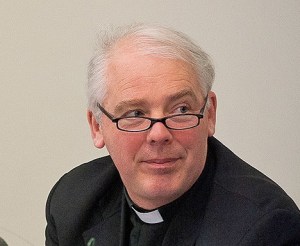Among the German-language bishops, the highest social media presence belongs to Cardinal Christoph Schönborn, who reaches some 110,000 followers via his various social media accounts, as reported by the Archdiocese of Vienna. Obviously, the cardinal promptly went on Twitter to thank his followers for their “valuable and critical reactions” to what he shares.
Other active social media bishops are Stefan Oster of Passau (16,594 followers), Wilhelm Krautwaschl of Graz-Seckau (6,882 followers) and Franz-Josef Overbeck of Essen (4,479 followers).
 This made me wonder: how do the bishops of the Dutch language area compare? Not that favourably, actually. Of the 18 bishops in the Netherlands and Flanders (I haven’t counted the emeriti), only five have any social media presence. Those five all use Facebook, one also uses Twitter and a third one adds Instagram. Their reach is also much smaller than that of their German speaking brethren, but that is easily explained by the size of the Dutch language area.
This made me wonder: how do the bishops of the Dutch language area compare? Not that favourably, actually. Of the 18 bishops in the Netherlands and Flanders (I haven’t counted the emeriti), only five have any social media presence. Those five all use Facebook, one also uses Twitter and a third one adds Instagram. Their reach is also much smaller than that of their German speaking brethren, but that is easily explained by the size of the Dutch language area.
 Topping the list is Bishop Everard de Jong (pictured), the auxiliary bishop of Roermond. He has 5,000 friends on his personal Facebook page, and a further 782 followers on his Instagram account.
Topping the list is Bishop Everard de Jong (pictured), the auxiliary bishop of Roermond. He has 5,000 friends on his personal Facebook page, and a further 782 followers on his Instagram account.
Number 2 is the archbishop of Mechelen-Brussels. Cardinal Jozef De Kesel is followed by 2059 on Facebook. Including him among the Dutch-speaking bishops is a bit of a cheat, as he posts in both Dutch and French.
Bishop Jan Hendriks, the coadjutor bishop of Haarlem-Amsterdam, who is also the single Dutch bishop with a blog, has a combined 1,726 followers on Twitter and his two Facebook accounts.
Bruges’ Bishop Lode Aerts boasts 1,636 followers on Facebook.
Number five, then, is Bishop Luc Van Looy of Ghent, who has 1,607 people on his Facebook page. He also has a personal account there, which does not reveal the number of friends he has there.
Despite the efforts of the five prelates above, the bishops in the Netherlands remain very hesitating in their use of social media. Traditional media is used, especially in writing, and a number of bishops actively contribute to the websites of their respective dioceses. But like visual media, social media is generally seen is something “not for them”. This may be a generational thing, of course, but dioceses also have communication teams who can post on their behalf. This is fairly common in other parts of the world. And at least one bishop seems open to it, despite his personal trepidation. Bishop Ron van den Hout of Groningen-Leeuwarden said in a 2017 interview:
“The diocese certainly participates in social media, but it’s not for me.” He takes an old Nokia from his pocket. “As long as the battery still works, this is fine for me. The next model will probably be an iPhone so that I can also use WhatsApp. I lag a bit behind. We are looking for a new communications advisor. If he or she thinks it a good idea for me to start tweeting, I will seriously consider it.”
Well, let’s hope that the communications advisors of the various dioceses have an eye for social media trends abroad. Using modern forms of media makes one more visible, certainly among younger generations (and not even the youngest anymore), who are increasingly leaving the traditional media behind. Increased visibility in a time where the role of the Church, faith and religion is diminishing will help in making the Good News known.
Photo credit: [2] Nederlands Dagblad
One thought on “Bishops on social media – still an uphill battle”
Comments are closed.